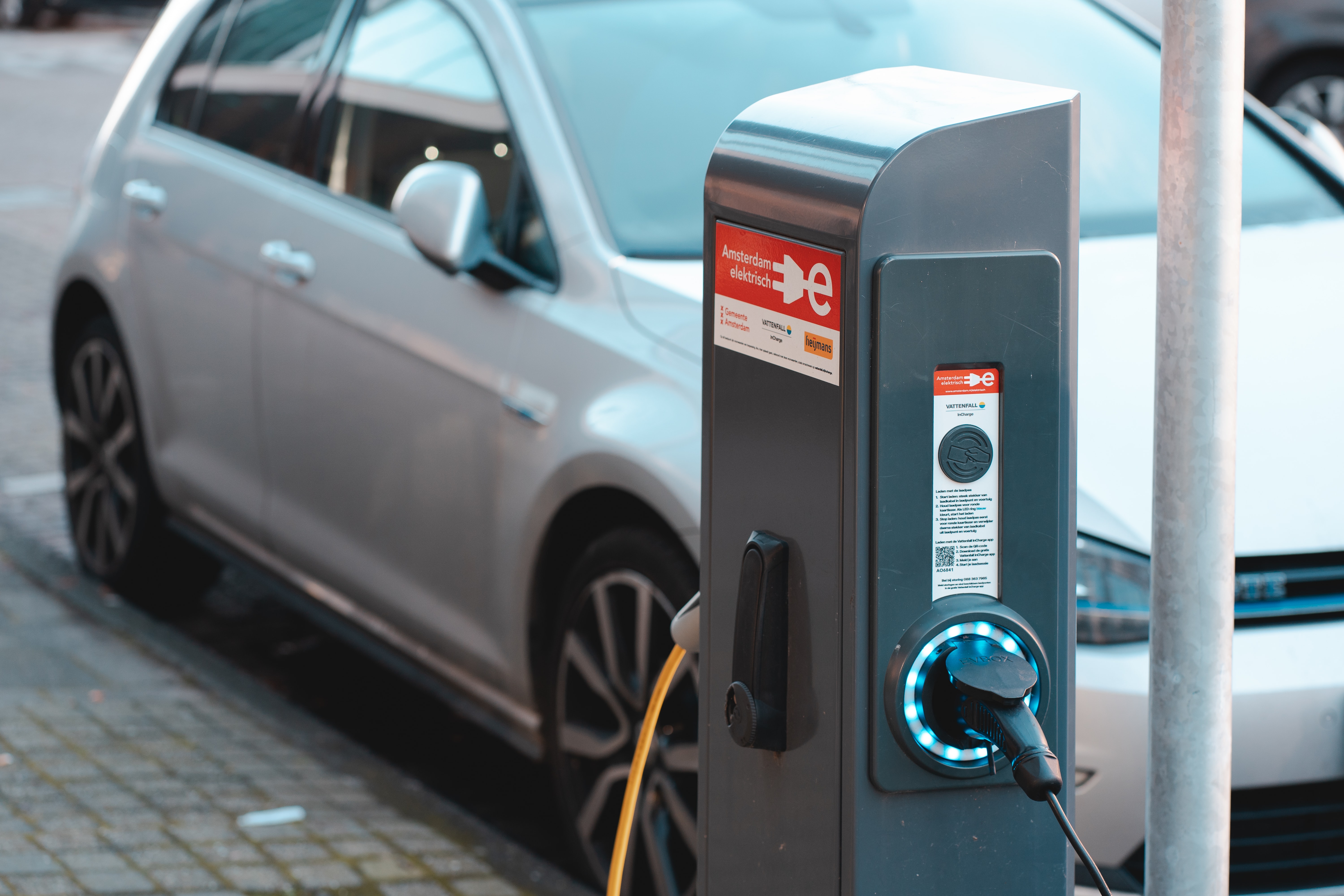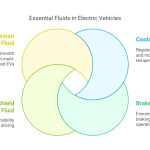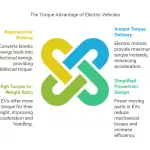Last Updated on January 17, 2025 by
While electric vehicles aren’t exactly required to have radiators, there can be certain benefits to owning one. A radiator can help the battery systems with thermal management.
An EV may not need a radiator that’s as large as a traditional car might need. However, a radiator can help towards keeping the batteries in their optimal temperature ranges.
A radiator can also be used to keep the motor cool, or even to help heat batteries on days that are cold. What electric cars need are heat exchangers.
These can be used to either absorb or reject the heat that’s present in the environment. For an EV, a radiator can look to be about the size of an automotive condenser.
Do Electric Cars Have Water Pumps?
An electric vehicle usually comes with various moving parts, which include water pumps as well. When compared to vehicles that use internal combustion engines, EVs have more water pumps.
There are a few ways in which an EV can produce heat:
- Batteries end up producing a lot of heat both while charging and discharging
- Computers that are on board could also generate heat while they’re being used
- Electric motors as well as investors are responsible for generating a lot of heat
- Heat can also be created by charging the circuitry
Should these systems ends up overheating, this could damage the EV. This is why there needs to be a system in place to keep these things cool.
There are many manufacturers who make use of liquid cooling to achieve this. This is as air cooling isn’t practical in the same way.
EVs generally end up making use of various electric pumps. These can be turned on and then off, when necessary.
It has also been seen that water pumps that are electric endure less stress while they are being operated. This is as a high tension belt isn’t responsible for driving them.
As a result, the cooling is more targeted as well as efficient. The electric vehicles will also need less replacements as well.
What Is The Coolant Used In Electric Vehicles?
You could be thinking about the cooling systems in radiators. Electric cars that have a thermal management system can employ the use of coolants. This is similar to traditional vehicles.
There are certain components, such as the battery and the drive motor, that may need a liquid coolant to either be heated or cooled. There are times when you may need to manually add more coolant.
How often you need to add coolant will be dictated by the maintenance schedule of the EV. You should only use the coolant that has been specified in your Owner’s Manual.
Keep in mind that the coolant does not have to endure the same difficult conditions as say, an internal combustion engine. However, it can still get contaminated, break down, as well as suffer.
Many EVs make use of a cooling loop. This will usually have a coolant of ethylene glycol.
Do Tesla Have Radiators?
If you’re wondering about electric cars and radiators, then the Tesla brand may first spring to mind. If electric cars have radiators, then surely Teslas should as well.
And Teslas in fact, do have radiators. They have multiple radiators in place which are a part of a heating and cooling system that is highly efficient.
This helps protect the longevity of the battery pack, and ensures its functionality as well. A radiator can also play an important role when it comes to the HVAC system, which is used to provide comfort to the passengers.
Do Electric Cars Have Power Steering Fluid?
A system that is electric will not draw its power from the car’s engine. A hydraulic pump becomes unnecessary as well.
Power steering fluid isn’t required either. The power steering in electric vehicles doesn’t need fluids.
The power comes from the charging system and the battery. This is as opposed to a pump that is belt-driven.
This means that less horsepower is required for electric steering, when it comes to the engine. This helps improve both the performance of the vehicle, as well as its fuel economy.
For the power steering in an electric vehicle, an electric motor is used. This draws the energy needed from the electrical system, which is what provded assistance while steering.
Do Electric Cars Have Alternators?
Electric vehicles as well as hybrids don’t have alternators. What they use is a converter that’s DC-to-DC.
This convertor is what recharges the battery of 12-volt. This is done using power that’s from the battery pack of high voltage.
This is also known as the traction battery, and is used to power the electric car.
Is There A Radiator In Electric Vehicles?
There are some electric cars that do have radiators. If you want to know whether electric cars need radiators, then the answer is maybe.
This is as there are many electric vehicle manufacturers that make use of cooling techniques that are different.
The battery that’s found in an electric vehicle works on a certain principle, that of voltage difference. This means that while discharging, the EV will produce heat.
There are EVs that don’t have radiators. Instead they use motors over combustion engines.
As a result, they end up producing less thermal energy when compared to normal cars. They use techniques like air cooling, liquid cooking fins cooling and more, to control the temperature.
Tesla cars employ the use of front radiators in order to cool down their motor, as well as other components of the EV.
Do Electric Cars Have Oil?
When it comes to radiators and electric cars, you could have various questions. One of these is whether electric cars need to use oil.
The simple answer is that no, electric vehicles don’t need to use oil. This is as their electric motors don’t need oil.
This means that their oil doesn’t need to be changed in the same way that a traditional car’s does. However, there are many EVs that come with a transmission that uses a lubricant.
This may need to be checked regularly, and replaced from time to time.
FAQ Relating To Electric Vehicles And Radiators

You could have many questions regarding electric vehicles, such as, how an electric car works. Here are the most frequently asked questions about electric cars, and how they work.
Are Radiators In Electric Cars?
When it comes to radiators in electric cars, there are many manufacturers that will make use of them. Teslas for example, tend to come with radiators.
However, this doesn’t mean that every electric car will have a radiator. This is as there are other ways of cooling the necessary components of the car down.
There are electric vehicle manufacturers who make use of air cooling, and others who use liquid cooling. There are certainly benefits to having a radiator in an electric vehicle.
But should a suitable alternative be employed, such as air cooling mechanisms, then a radiator may not be necessary. This is why even though radiators are found in many electric cars, there are many more which use other ways of cooling.
Do Tesla Cars Have Radiators?
Yes, Tesla cars tend to come with radiators. In fact, it’s possible for multiple radiators to be present in the same Tesla car, depending on the make and model.
Do Electric Cars Have Heaters For Winter?
Yes, electric vehicles comes with both heaters as well as air conditioning. In an electric vehicle, there isn’t an engine that generates heat.
Instead, the heat in the interior is generated using electricity. There could also be several heating elements that are resistive, used to generate heat.
Do Electric Cars Need Coolant?
Electric cars do need to have a cooling system in place for the batteries. There could also be other heated components that need to be cooled as well.
However, you can just use antifreeze as a coolant in an electric car. Instead, different electric cars will have different cooling fluids that you’ll need to use.
You can find out what this cooling fluid is from your Owner’s Manual. Be sure to either use the cooling fluid that is mentioned in your manual, or a suitable alternative only.
The coolant is required as the batteries, the motors as well as the inverter all produce a certain amount of waste heat. Liquid cooling as well as radiators are great ways of getting rid of the heat that builds up.
This helps keep the components of the EV ar a temperature that is safe. There are a few EVs that use air cooling.
But it’s more popular for EVs to make use of liquid cooling. This is as electric vehicles that are air cooled see their batteries degrading faster.
The coolant will also need to be flushed out after a certain number of years. For Tesla, this is around four years.
Without a coolant, the batteries can wear out faster. This is why batteries earlier would drop to around 80% after reaching a mileage of 100,000 miles.
Modern EVs that do use coolants see the batteries dropping to around 80% only after 350,000 miles.
- Lavender Oil - February 2, 2025
- Electric Cars with Solar Panels On Roof: The Future of Sustainable Driving - January 29, 2025
- Best Cheapest Electric Car Reddit Comments - January 23, 2025








